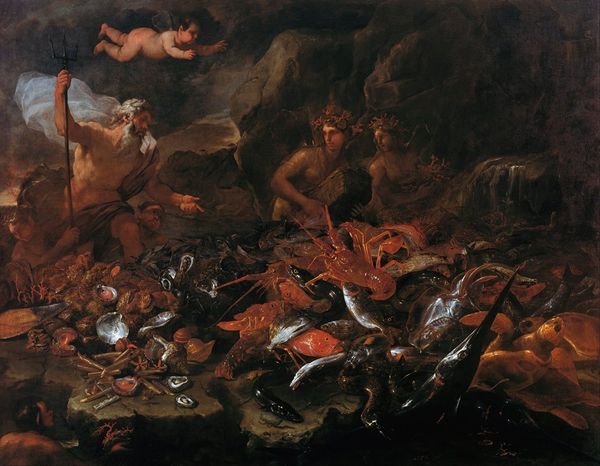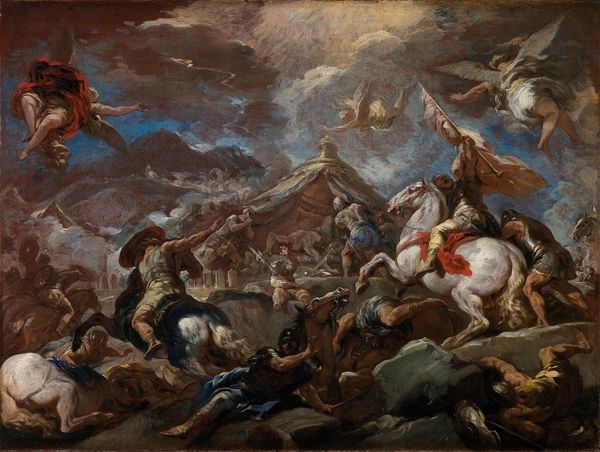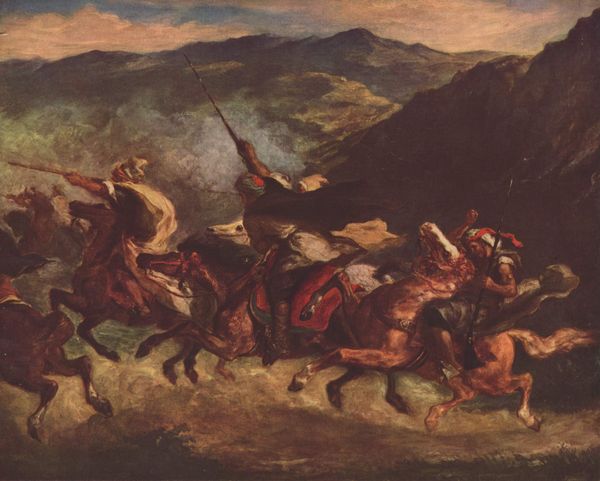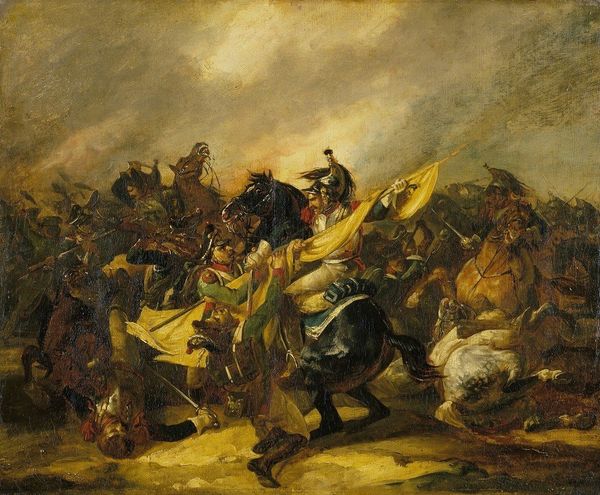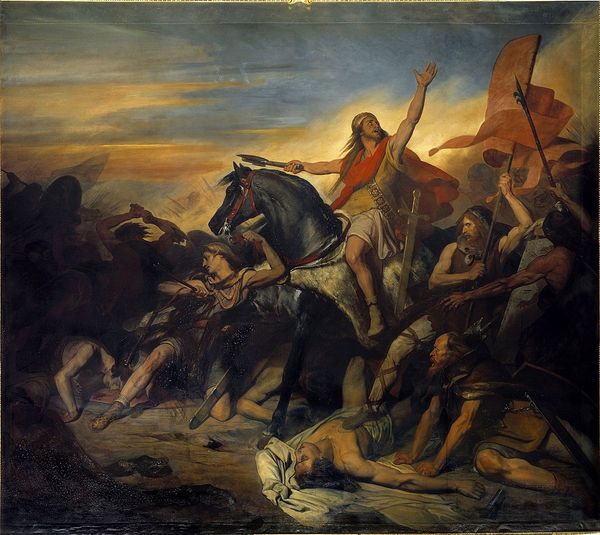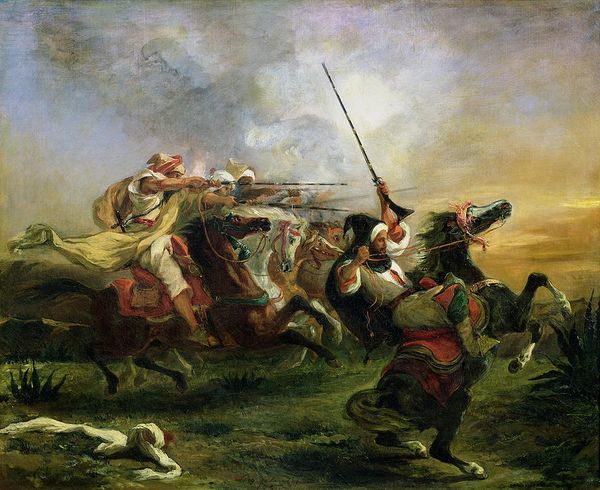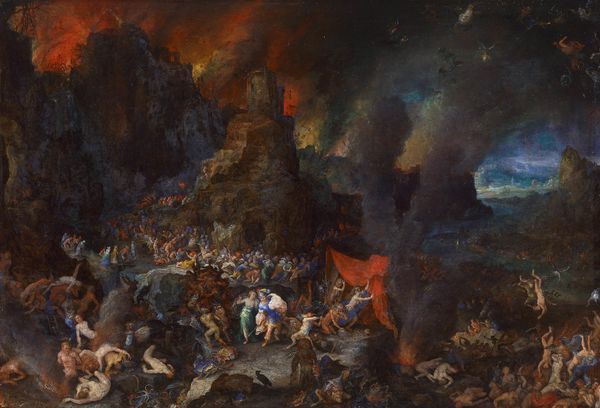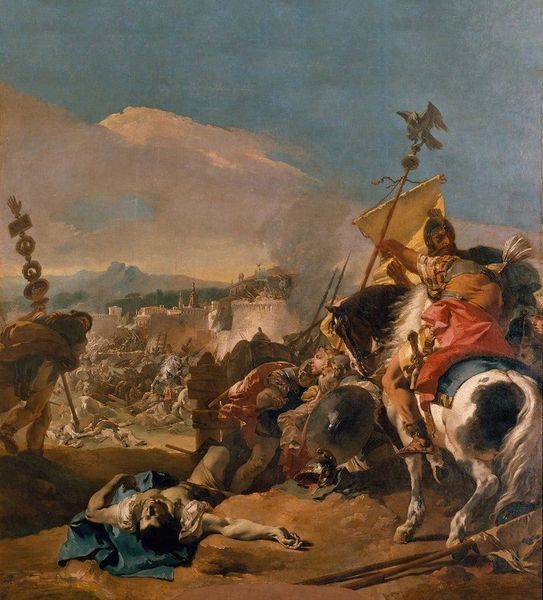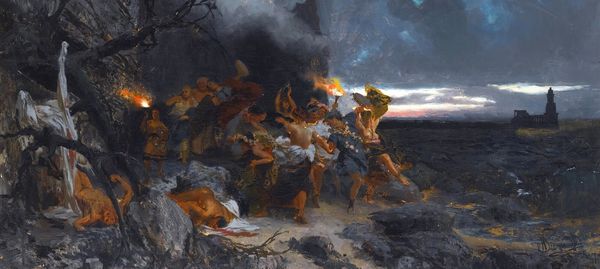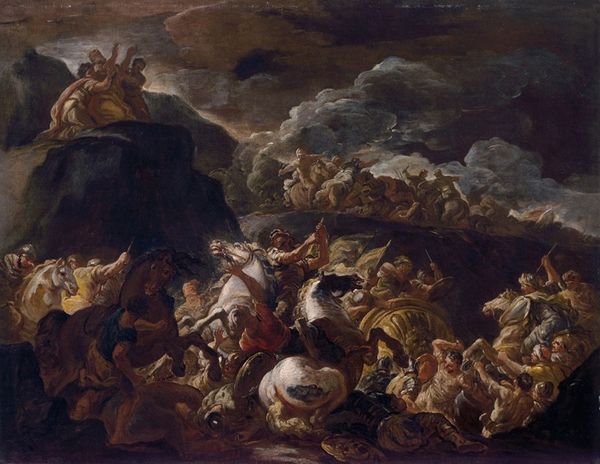
Copyright: Public domain
Curator: Standing before us is Peter Nicolai Arbo's striking oil-on-canvas, painted in 1872, titled "Asgardsreien, a Norse Version of the Wild Hunt." Editor: It feels chaotic, even apocalyptic. An intense, dark storm is brewing, punctuated by pale figures surging through the sky. The movement practically leaps off the canvas. Curator: Arbo’s rendering captures a potent moment in the reception of Norse mythology in 19th-century Europe. Romanticism was in full swing, and national epics were used to form cultural identities. Consider how Arbo positions this specific rendition of the Wild Hunt. Editor: Are you thinking about its connections with the rise of nationalist sentiment during that period? It’s difficult not to see it as interwoven with that kind of cultural resurgence. It certainly elevates a national mythology in a dramatic fashion. Curator: Exactly. Arbo studied in Düsseldorf, a center for history painting, which heavily influenced his grand, dramatic style and penchant for Norse themes. This work, appearing soon after Norway gained more autonomy within its union with Sweden, participated in shaping a distinct Norwegian identity through art. Editor: Look at the female figures dominating the sky; they wield weapons and appear to lead the charge, really upending stereotypical depictions of femininity. Are they representative of the Valkyries, choosers of the slain? Curator: Indeed. Their dominance certainly challenges traditional gender roles often embedded in history painting. Further, the composition positions them within a lineage of powerful, independent female figures, while subtly reinforcing the virility of the nation and its rooted myths. Editor: This isn’t just about mythology; it's a powerful assertion of cultural pride at a pivotal moment in Norwegian history. Art like this, prominently displayed in museums and reproduced widely, actively participates in defining a collective sense of self. The way he's captured this frenzied energy is remarkable. Curator: It pushes beyond romanticizing the past by subtly infusing contemporary politics into ancient lore. What strikes you most now? Editor: The continued relevance of these mythical narratives—how they continue to inspire discourse around identity and power long after their initial creation. Curator: Absolutely. "Asgardsreien" resonates even today as an image where historical, political, and social layers meet.
Comments
No comments
Be the first to comment and join the conversation on the ultimate creative platform.
